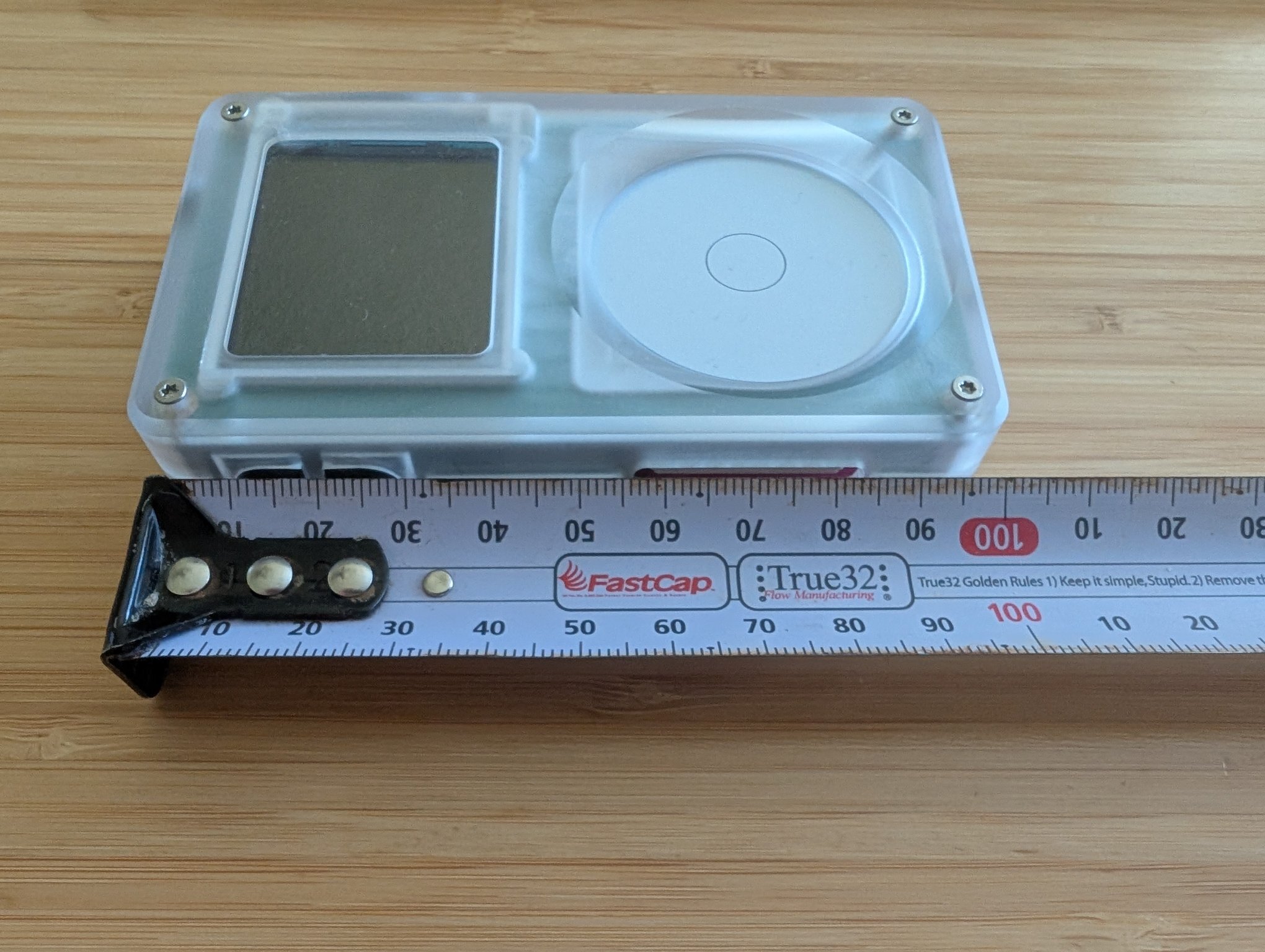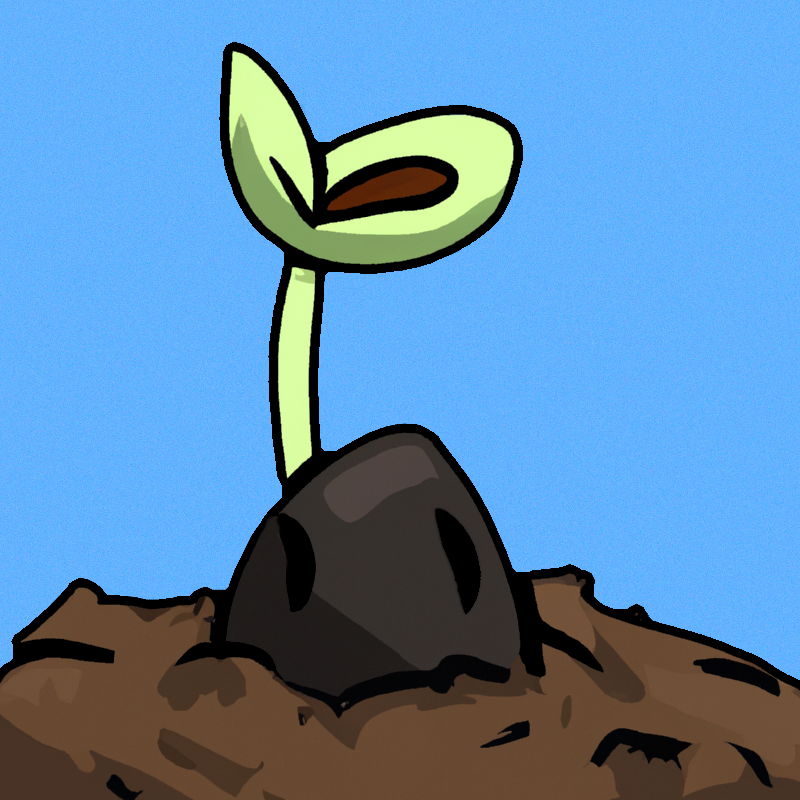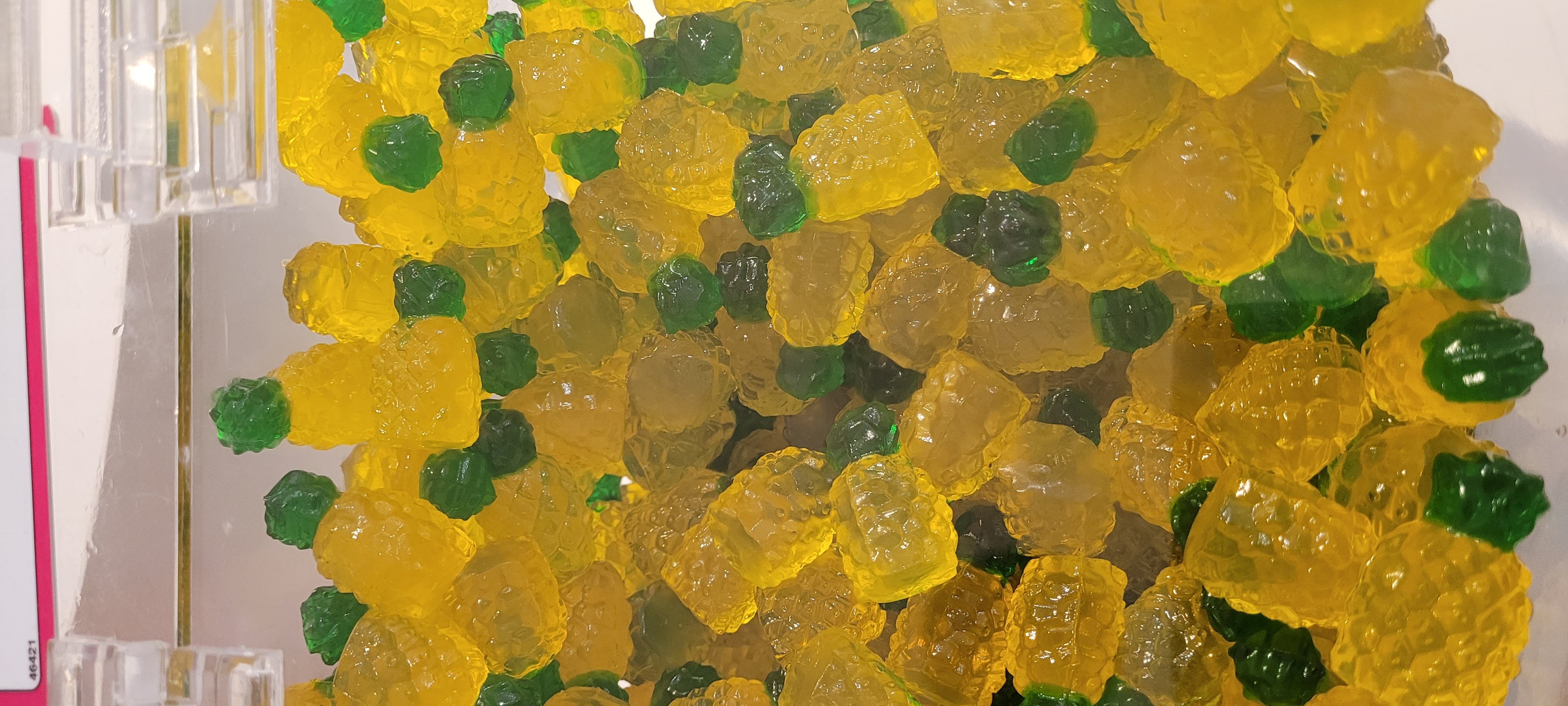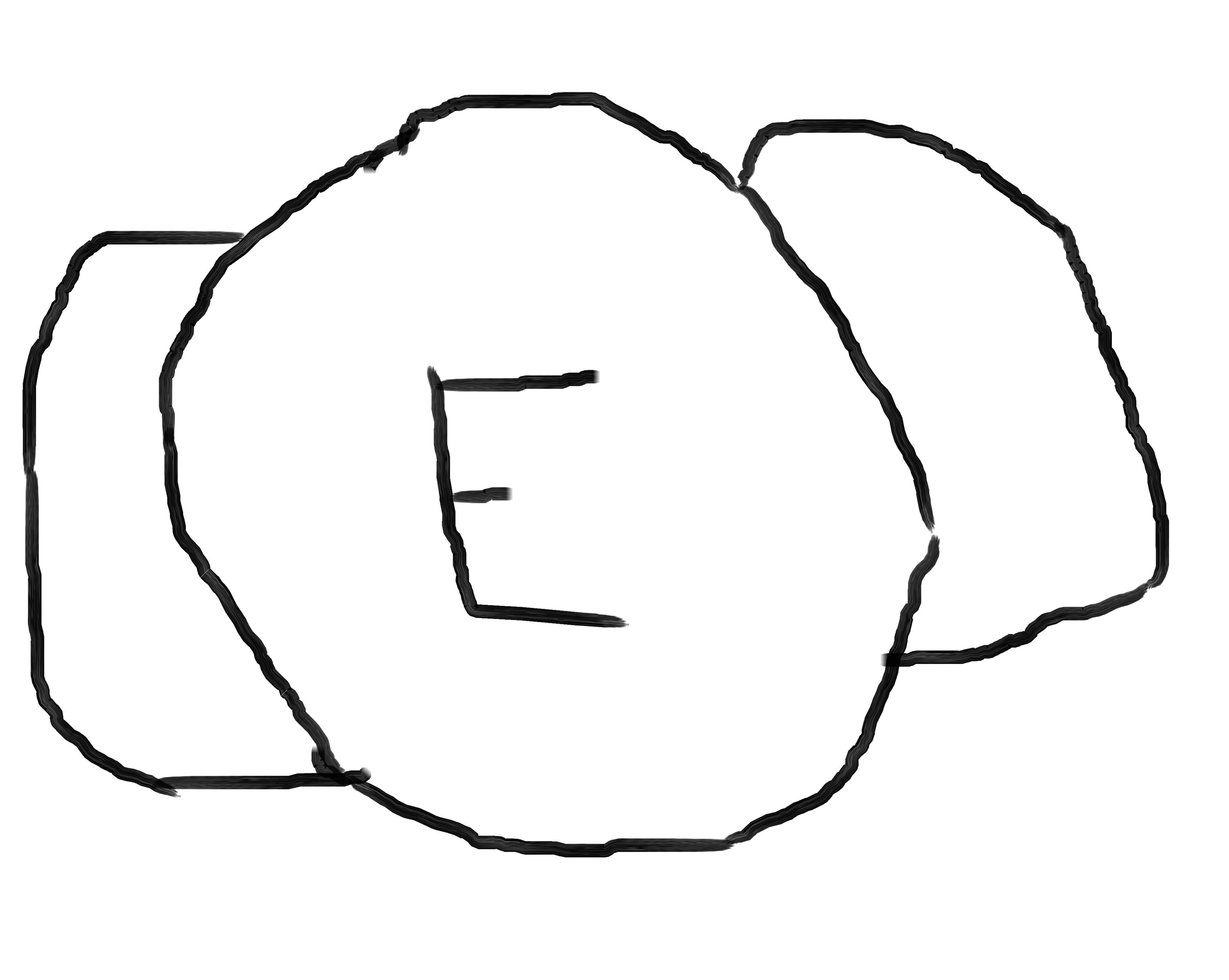For instance, a foot…is basically a foot length. So there’s this foot-measuring waddle some people do walking literally heel-to-toe to get a general sense of the space. An inch is kinda a finger width, etc (they’re all not perfect by any sense).
I’ve decided to just take the plunge and basically re-learn all my measurement systems because I’m seeing less and less of those being used. I started with just memorizing all the conversions but that’s literally just adding another step. Everything I own basically has settings to switch or show both measurements (like tape measures) so I’m just going to stop using Fahrenheit and the United states “Customary System” all together.
Any tips or things you’re taught or pick up on? There’s a funny primary school poem for conversion of customary liquid measurements,
Land of Gallon
Introducing capacity measurement to learners can be challenging. To make this topic more accessible and memorable, we can integrate creative and interactive activities into our teaching approach. Using storytelling, we can transform the sometimes daunting task of learning measurement conversions into a whimsical tale.
- In the Land of Gallon, there were four giant Queens.
- Each Queen had a Prince and a Princess.
- Each Prince and Princess had two children.
- The two children were twins, and they were eight years old.
Once students are familiar with the story be sure they see the connection between the story characters and the customary units of capacity measurement. If necessary, label the story pieces with their corresponding units of measure: queen = quart, prince/princess = pint, children = cups, 8 years old = 8 fluid ounces. You can reduce the number of customary units in the story based on student readiness. link
tl;dr looking for anything to remember the hierarchy and memorizing the metric and Celsius measurement system, sometimes explained in schooling or local sayings. (if I had an example for those systems I would give one lol).
For length, for an average male one meter is about one large step with extended legs (useful for distances), or the distance between e.g. the left side of your torso to the end of the extended right hand (useful for estimating the length of rope or smth).
For weight, it might be useful that 1 liter (that’s 1 dm3 but noone uses that except sometimes in scientific literature) is almost exactly 1 kg, and a typical cup fits 0.25 liter. A shot of alcohol is either 20 or 40 milliliters (0.02 or 0.04 liter) depending on where you are and what you order.
For conversions you just need to remember the base unit (e.g. meter and grams/kilograms) and the decimal prefixes. But you really only need milli (1/1000), centi (1/100) and kilo (1000) in day to day life. Then you simply shift the decimal.
Meter was easiest for me because it’s essentially a yard (when eyeballing).
Liters are easy because the soft drink industry picked up on it decades ago as a way to get people to drink more soda. You’d buy cans and 6-packs, but nobody bought a gallon of soda. But they would, it turns out, buy a liter of soda, and as we got more obese as a nation, 2 liters. Liters of consumer drinks are really common, and so easy to visualize.
yard
Except in US handegg, do people still use yards? It sounds old-timey to me now. Normally, I either hear people talk in feet or miles, but never yards. Even in school (California), I vaguely remember hearing “X yard dash” when I was a little kid, but that definitely changed to “X meter dash” as I got older.
I was confused on the “cup” part because I wasn’t sure if you meant like a typical drinking glass or the actual cup-customary measurement until I looked at it (another reason i dislike the measurement system…a cup of coffee is so damn vague at times). I’ll definitely remember the torso one.
Celsius:
0 is the phase transitiom temperature for water between solid and liquid under normal atmospheric pressure. 100 is the phase transition temperature between liquid and gas under normal atmospheric pressure.
knew about the 0 but not the 100, good shit.
Also, this one might be somewhat subjective since stuff can feel hot or cold depending on the person, but body temp is around 37C, with hands lagging behind a degree maybe.
Even a two degree difference is obvious, and helps with pets (cats have an internal temp of 39 and dogs of 37), and to a lesser degree, cooking.
That thing about the queen and the princes etc. is silly and just gets in the way. Don’t those people have anything better to do?
It could be useful at times, in my experience it’s just two people trying to remember this strange ass poem and end up having to look it up anyways.
You mean the pint’s a pound poem? It’s not even right, you know. A pint of water weighs about 1.04 lb.
didn’t know that one, was referring to the Land of Gallon one. Get to prince and princesses then everything would get fuzzy, recently acquired a hot-plate thing with conversions on it so remembered even less of it till I looked it up again.
A small trick is to measure your own hand. How big is your fingers spread all the way? That will always be a good quick measure. Like this: 🤙and 🤘.
And for the hierarchy:
Kilo means 1000 of something
Centi means 1/100.
Mili means 1/1000.kilo + meter = 1000 meter. centi + liter = is a cube of water that measures 1 cm all around, that actually 1/100 of a liter. And 1/100 of a kilograms if it is water.
Good idea with the hands, I kinda already had this with the other system (different methods though) so now I gotta do the new ones and sear that into my brain. I’ve always been interested in a tattoo like the myth busters guy with a ruler on his forearm but I like the hang-ten one and seems cheaper/less painful.
A 1cm cube is 1ml and not 1cl.
One litre is a 10x10x10cm cube.
Uhm, it might sound arrogant but in metric you don’t need that sort of thing? The next order of measurment is just ±10^x where X is the number of dimensions you want to look at: 10 for i.e. length, 100 for area and 1000 for volume.
Lets look at length: Most commonly used are Millimeter, Centimeter, Meter and Kilometer.
Meter is the base. The name centimeter derives from meter and the Latin word centum meaning 100.So a centimeter is hundredth of a meter (decemeter, 10th, ist not really used much in everyday life). One step further down is millimeter: mille is Latin for thousand, therefore a millimeter is a thousandth of a meter.
Going up Greek prefixes are used: Deka-(10) and hektometer (100) are rarely used and Greek chilloi means thousand and therefore a kilometer is 1000 meters.
Staying in one dimension the same applies to gramme for weight: Milligrams, Gram and Kilograms are the moat common.
Going up in dimensions we use the same prefixes but the multiplyer changes because 10^2 is 100. So to go from 1 m² (one meter to the width times one meter depth) to 1 km² (thousand meters wide times thousand meeter deep)) the multiplier is not 10³ (1000) but 100³.
The whole prefixes are effectively optional and just for better readability.
The next order of measurment is just ±10^x
There’s a strong possibility that I’m just dumb, but this used to trip me up at first. Especially if I was on the spot: 1250mm to m, go! Uh, 125.0? Uh, 12.50?! Uh, 1.250! Yeah!
Or 1.5L to mL, go! Uh, 150mL? Uh, 1500mL! Yeah!
Also, realizing that the most popular prefixes are either kilo 1000x or milli 1/1000 helped. For example, cm don’t seem very common, like dimensions are almost always in mm.
I heard someone say once, the metric system is better by a thousand.
Not arrogant, I get the hierarchy statements being mundane especially for someone who’s inundated within the systems themselves. The honest answer to this is sometimes everyone doesn’t learn at the same pace or get upset when they’re confronted with something different. For instance, if I were working with someone that didn’t complete school or had a learning disability, I could see them eventually grasping milli and centi (I still hesitate with if I’m using them properly with MM/mm/mM) but then hekto-deka is another tall order for someone who just wants to get off work and have a beer without the hassle lol. A school yard saying that uses order listing as an acronym for a Mnemoic like EGBDF in music (Every Good Boy Does Fine) would be cool.
Mostly though, it’s more about like the “foot” measurement thing. Something like wrapping my head around the average body weight, cool factoids like comparing volumes of water or like someone commented that 100 is the boiling point, etc.
edit: @donuts@lemmy.world just responded with the mnemonic I was looking for lol.
As many other said, milli and kilo are the prefix you are going to use 90% of the time, with the exception of centimeters. Food and beverage products are measured in kg, liters or milliliters, furnitures are measured in mm, cm or meters, distances are in meters or kilometers. Everything else is relatively uncommon. If you are not used to them you can still use some rough estimates, at least to get a sense of scale, but it’s generally not used by people who learn it first.
For example, the width of a finger is a few centimeres, a bottle of water is usually 1 or 1.5 liters, a leg of an average male is around 1 meter long, a kilometer is how much you walk in 5 minutes, and so on.
As for the writing, the rules are quite simple: the base measurement is always in lowr case (m, g, l), you might see liter written as L instead of l but, while common, is technically wrong. For the modifiers, most are lower case, some are upper case to distinguish
1000 = kilo k 100 = hecta = h 1/10 = deci = d 1/100 = centi = c 1/1000 = milli = m 1000000 = mega = M
There are more specific rules for scientific units of measures, like if the abbreviation of the base unit is more than ine letter, the first is upper case (1 Pascal, the measure of pressure is 1 Pa instead of 1 pa), but if you don’t work in STEM, you likely won’t care.
Sure, it’s always a step of 10x, but you do have to remember all the prefixes. Or you can only remember the 1000x prefixes - but you also need to remember centi-. Then, nobody says “megagram” - it’s “ton”. So there are quirks to remember.
Then, nobody says “megagram” - it’s “ton”. So there are quirks to remember.
We absolutely should, though… That and megameters, for car mileage. We always round off to the nearest thousand kilometer anyway.
Yes/No. There are quirks such as “ton” but in essence you can say 1 million gram and everything is fine. Remembering all those short forms is a nice to have, not a requirement.
We don’t really need any of those mnemonics because it’s a perfect systemMore seriously there is the “King Henry Died, Drinking Chocolate Milk” for the Kilo (1000) Hecto (100) Deca (10), Deci (0.1) Centi (0.01) Milli (0.001), but that doesn’t really help with measuring on the spot, aside from being able to get the prefix right.
There’s an average step being 1 meter, but thats less useful for people with shorter legs unless they want to join the ministry of silly walks.
One that I use often is converting meters per second to kilometers per hour. Because 1 meter per second is 3600 meters per hour or 3.6 kilometers per hour, you can actually skip the multiply by 3600 and then divide by 1000 and just multiply by 3.6.
But aside from time conversions, there isn’t really anything else that can help because it’s just moving the decimal.
Slightly related, you can tell how far away lightning is by listening for the thunder and counting the seconds. Sound travels at 346 m/s so every 3 seconds is roughly 1 kilometer away. But I suppose you can do the same for miles and count to 5.
Ty for the Mnemonic, definitely something I was looking for and even responded to someone else with the musical treble clef one. The thunder one will definitely help and something that can be passed onto kids (everyone basically knows the miles one). I’m gonna have to start compiling a list because all of you are awesome and there’s a lot of information on here.
Just wish signs in the states were posted with KPH as well but that’s extremely rare, I still associate maps with mileage and arrivals based on MPH so will be harder to transition that then anything else I imagine (120 miles away so about 2 hours on a hwy going 60 mph which is average for states).
Well something about 200 kms away will take 2 hours to get there on the highway going 100 km/h…
It’s not as neat as 1 mile = 1 minute at 60mph, but it’s still pretty easy to do the mental math.
Fellow American convert to the metric system. Converting, in my opinion, won’t get you very far in actually understanding the measurements. To this day, the conversion rate is something I have to dig through my memory for.
For me what helped with the temperature scale was breaking it into chunks based on what I would wear, 10°-15° would be a pullover sweatshirt, 15°-20° a track jacket, etc, which got me to stop focusing so much on the conversion. Eventually you just get a sense of these things, I think that most people can only really feel a difference in air temperature of about 1°C. 0° being the freezing point cutoff is super helpful for judging things like potential road conditions if it’s wet.
For distances I first got the sense of how far things were in kilometers by being a runner and knowing distances around my neighborhood as to how they lined up with running a 5k, 10k, etc. For meters, at my height and gait, my stride length is about a meter long. A little bit on the shorter side of things, but it still helped me get an idea as to what a meter looked like in physical space, even if it’s off a bit. Centimeters and millimeters are a different story. Hard to find perfect analogs in the world, but you’ll find something eventually. I think for example long grain rice can be ~1 cm in length for example.
The biggest lesson in my own journey and seeing a lot of people online talk about trying to do the conversion is that people get overly concerned with precision when first making the switch. If you actually think about most of our daily interactions with measurements, they’re much more approximate. For example, the difference between whether it’s 71°F or 73°F is rarely pointed out. The temperature is just “in the low 70s”. We say that something is “about 20 miles away” which is almost an implicit 7-8 mile range. I would guess 80% of the time, this is how we interact with the units we use, so focus on that. No one is going to get upset if they ask the temperature and you’re off by a few degrees C.
In terms of mnemonics like US kids get in school for some of these things, everything in the metric system is a multiple of 10 from everything else, which is what makes it great. Also remember that at room temperature, water’s density is 1 g/mL, so if one of capacity or weight is easier to visualize for you, it’s a shortcut to the other. Standard disposable water bottle in the US is 500 mL or half a kilogram of water.
If only metric time had caught on too…
Good information, I’ve been doing the temperature thing more and more but for cooking I haven’t switched (gonna have to refigure the food safety guidelines so I’m not putting myself in danger on that one).
I think you’ve convinced me to officially do a marathon, that seems like a great and healthy way to consider the larger distances and wrap my head around it!
I’ve heard something like: 30 is hot, 20 is nice, 10 is cold and 0 is ice.
For temperature:
Water freezes at 0, boils at 100. Room temperature 20 degrees Celsius. Normal body temp 37 degrees.
Trivia of minus 40 Fahrenheit being the same as minus 40 Celsius.
Height and weight are usually still thought of in imperial (canadian here), so I think of myself as 6’2", instead of 188 cm.
Volumes and lengths and weights are related. One cubic cm is one mL of liquid. One cubic centimeter of water weighs one milligram. One thousand mL of water makes one Liter, which weighs one kilogram.
2.205 ponds makes one kilogram.
Shifting between miles and km is a pain in the ass, given the 1.6 km per mile.
1 calorie is the heat required to increase the temperature of 1 ml of water by 1 degree
1 mL (or cubic centimeter) of water weighs 1g, not 1 mg. 1 mg would be 1 microliter of water, or one millionth of a liter.
Yes! My bad, will edit.
Miles and Kilometers are very close to the golden ratio. So adjacent Fibonacci numbers can be used to approximate them.
5 mi is about 8 km
8 mi is about 13 km
etc
This advice is also golden!
I just learned some basic things and go from there.
A Ruler is Ruler 12 inches or 30 cm
A meter is roughly equivalent to a yard slightly more and both are like 1 big step
And then i just remember that theres 2.2 lbs per kg
1.6 kms per mile
YES! Do it brother! 👏 I’m US born and raised and I’ve voluntarily switched to metric a while ago. Metric is actually more intuitive to me now.
I started with just memorizing all the conversions but that’s literally just adding another step.
Personally, I think this is a mistake. What worked for me was to start building reference points in metric directly. No conversions.
- yes: “Oh, it’s nice outside. What temperature is it? 20C, great. I’ll remember I like 20C.”
- no: “I like 70F, what’s that in Celsius?”
- yes: “Wow. That’s long board. How long is it? 2m, great. I’ll remember 2m is long.”
- no: “What’s 6ft to meters?”
Don’t ask, “What’s this in metric?” just ask directly “How long/fast/heavy/hot is this thing?”
You need to get out there and start measuring and experiencing stuff. Measure parts of your body to build more reference points. For example, I know from the floor to my waist is about 1m, from the tip of my index finger to the first bend line is about 2.5cm. My weight is about 65kg. Normal body temperature is about 37C, but 38C and above is a fever. My mom’s house is about 30km away.
Switching temperature to C is pretty easy, that’s a good start. Here are some other tools that may help.
- meter only tape measure (I love this tape measure) measure the length of everything
- gram only kitchen scale measure the weight of all your food
- newton-meter only torque wrench tighten all the bolts
Also, did you know Amazon US limits the products available to us? But you can break out and shop from Amazon Japan, for example, and get products that aren’t available from Amazon US. I’ve found that Amazon Japan has way more metric-only options than other places.
I really like buying metric only tools because:
- it removes the possibility of relapse, forcing you to build new reference points
- it removes the possibility of other people messing with the units
- it removes clutter from the UI, making it easier to use
Eventually, you could switch your car too, but I wouldn’t recommend you do that right now. After a few months, you’ll start getting the hang of metric more. It really doesn’t take that long to adjust.
P.S. Does anyone know where I could get some metric-only measuring cups?
I second this! I was in the US for a while and quickly realised that doing constant conversions was a PITA, so I learned some rough reference points in imperial.
I think it’s good to get some small and some large reference points, which make it easy to guesstimate other things based on what you know. Mine were (given in metric here):
- A glass of beer is 0.5 L.
- A big barrel is about 200L (0.2 m^3).
- My walk to work is 3 km, a long hike is 25 km.
- A very short person is about 150 cm, a very tall one is about 2 m.
- I can deadlift about 100 kg, and bicep curl around 15 kg.
- A potato is on the order of 100g, while a watermelon is around 2kg.
- 70 C is a nice sauna, 25 C is a nice summer day, 10 C is chilly, 0 C is sleet-temperature, -10 C is powder snow cold (depending on where you live the colder temps might be more or less relevant)
Figure out some similar things for yourself, and it’ll be relatively easy to think along lines like “That walk was a bit further than my way to work, so it’s probably about 4km”, or “that box was heavy, but far from 100 kg, so it’s maybe around 30 kg.”
Bonus points if you try some guessing like that and double check afterwards to tune in your feeling for different measurements.
Meters is extra easy if you’ve played Minecraft because you know you need a two-block height for head clearance, and you can estimate the sizes of other things from there.
As a European, I have never used measuring cups. Our recepies call for ingredients to be measured in Milliliters for water and milk and Grams for everything else. We use cans like these for volume measurements: https://www.idealo.de/preisvergleich/OffersOfProduct/204600175_-messbecher-935000-0-5-liter-bruchsicher-huenersdorff.html
P.S. Does anyone know where I could get some metric-only measuring cups?
The key is to never use measuring cups, stick to the scale for everything. Using recipes made with mass is the bed way to do it, but if you are trying to adapt a volume based recipe, look at the serving size on the food package; it should be given in volume and mass. For example my king arthur brand 00 pizza flour serving size is 1/4 cup (30 g).
I have some metric only measuring instruments from ali express. Plastic containers, measuring tapes, rulers, squares etc.
Most stuff on Ali is in metric unless its been specially converted to Imperial (which is more expensive).
Search for “measuring cups”:

I wonder if the reference thingy works for languages too.
Because thats why Kids are soo good at learning languages while adults have more issues learning new languages. Mainly because they want to see the word translations, etc. That would be hard for japanese or chinese I think as they work entirely different
I think it has t do with neuroplasticity.
For Celsius:
30 is warm
20 is nice
10 is chilly
0 is ice
-10 is Ice+
Nah, 40 is hot, 30 is warm, 25 is nice, 20 is chilly, 15 is cold, Below 10 is very cold
(For me personally at least, in Melbourne)
deleted by creator
1 cm is about the width of the tip of your pinky finger.
1 m is about the distance from your nose to your fingertips if you hold your arm out, and extend your fingers.
100 m is the length of the straight section of an athletic track, which is about the same length as a football field.
1 liter is about 1 quart, which is 1 carton of milk.
The m-to-km conversion is pretty close to 1½.
The kg-to-lb conversion is two-and-a-bit.
A difference of 1°C is close to a difference of 2°F.
The m to km conversion factor is exactly 1000. Same with g to kg and Pa to kPa, W to kW etc.
(maybe you were going for mi to km? Which is 1.6?)
I raised my kids using metric temperature for weather. Now that they’re older they hold me to it!
Get ruler. Hold your arm out 90degrees, Measure from the tip of your finger 1 metreacross your body, and rember where that Metre ends on your body. Then you always have a reference for 1metre
I was taught this to measure electrical cable. For me it’s from my left shoulder bone to my right finger tips (or the right shoulder to left finger tips)
A good base is knowing milli is a thousandth and kilo is a 1000 1000 milligram = a gram, 1000 grams = a kilogram 1000 millililters = a liter, 1000 liters = a kiloliter 1000 millimeters = a meter, 1000 meters = a kilometer
Plus, they’re all connected. 1 gram of water is 1 milliliter and takes up 1 cubic centimeter.
A good base is knowing milli is a thousandth and kilo is a 1000
YES! I feel like a common pitfall people run into is trying to bust out all sorts of fancy prefixes, deka, hecto, centi, deci, etc and then people get overwhelmed by all of that.
The most common prefixes are kilo 1000x or milli 1/1000. That’s all you should focus on.
I mean centimeters is probably the most common in households and centiliters at least in cocktail recipes. But yes, you don’t really need deka, hecto or deci in your daily life and you can grow up not knowing they exist at all. It would also make things like tape measures too complicated to look at.
centimeters is probably the most common in households
I’m curious, where are you from? In the US, I’d say we think of centimeters as a pseudo-inch, so I think I understand why people would gravitate to centimeters here.
But do other countries use centimeters as much? I’m especially curious about really metric countries like Japan or (who else?) France? Germany? I wouldn’t be surprised if Canada or UK use centimeters.
Related: centimetres or millimetres
I’m from Germany and we use cm a lot. I can’t imagine not having anything between mm and m, the gap is huge. Those are probably the most used ones in daily life and km for distances farther than 999 m.
Here’s a common German tape measure next to a book, which is 20.6 cm (206 mm, 0.206 m) long:

Cool! Thanks for sharing!
Now that I think about it, I think I own a carpenter’s measuring tape. Maybe that’s why they don’t call out cm.

Also just to be clear, my measuring tape is definitely not a standard tape you can buy at a local hardware store. It took some effort for me to find a metric-only measuring tape.
I know some people in the building profession who habitually call out everything in mm, as oppose to most people where I am using cm for most household measurements. So I’m not surprised to see measuring tape (esp a carpenting one) ignoring the redundant cm
Interesting, I’ve never seen a tape measure like this. In the end it’s the same thing, just remove a zero and you have cm. That’s the magic of it.
But i understand now how you came to the conclusion that centi is not used that much.
I really hope the US will at some point adopt the objectively better metric system!
I really hope the US will at some point adopt the objectively better metric system!
Me too. I’m trying! 🤝
Most countries in the world are “really metric countries”. And yes we do use the cm a lot for measurements inside the 1-100cm range.
Plus, they’re all connected. 1 gram of water is 1 milliliter and takes up 1 cubic centimeter.
To heat said water by 1 degree celsius (or kelvin) you need one calorie. If one newton were to displace that water through the distance of one meter, the amount of work done would be 1 milijoule.
Ive never heard kiloliter, at that point I say a thousand liters, or a cubic meter.












